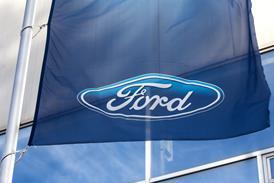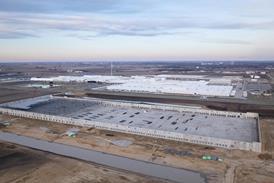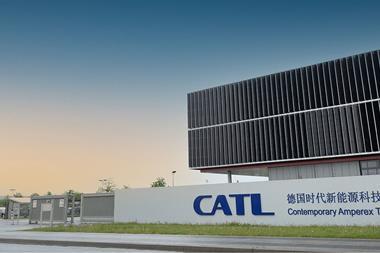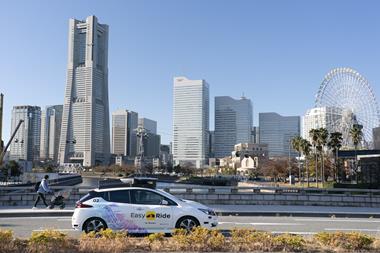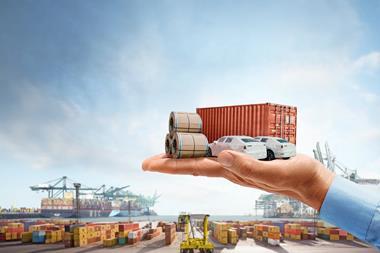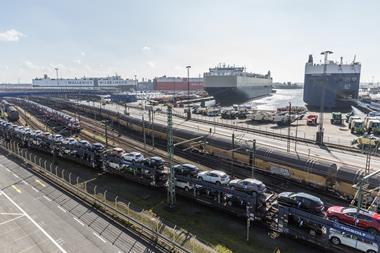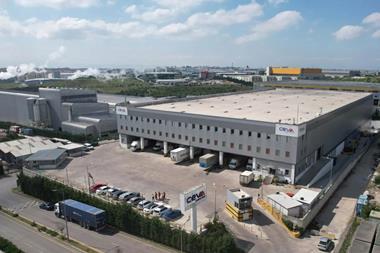
Hero Moto, formerly a joint venture in India with Honda, is the world’s largest manufacturer of two-wheelers. The company produces around 600,000 units each month across three plants in Gurgaon, Daruhera and Haridwar, with a fourth plant due to open this year in Rajasthan. According to Deepak Sharma, head of logistics, reducing logistics costs and loading efficiency is crucial across such volume.
One of the biggest bottlenecks that Hero Moto has been addressing is in moving vehicles to the company’s 750 dealer points across India. Sharma said that the loading process for two-wheelers in India, which typically involves clamping vehicles in rows with an iron frame to secure the vehicles at their base, is inefficient. Because the iron frames need to be clamped at both ends of a two-wheeler, it requires more than one person. "It is tedious, time consuming and laborious," said Sharma.
To address this issue, Hero Moto has turned to BLG Parekh Logistics, a joint venture between Germany’s BLG Logistics and Parekh of India. The logistics company has been trialling a patented ‘clamped version’ for two-wheeler movement in India. The system, which is based on a version BLG uses in Brazil to move Honda motorcycles, secures each vehicle on both sides from the footrest with clamps that are mounted on the floor. Though carrying capacity remains the same as in the conventional transport, the loading and unloading time is “drastically” reduced, according to Sanjay Gupta, vice-president of BLG Parekh. He added that the system also reduces damage during transport.
BLG Parekh has so far used the system on more than 30 trips with Hero Moto since January, and Sharma described it as a “game changer” for two-wheeler logistics. Gupta confirmed that he was also in negotiations with Bajaj Auto – India’s second largest motorcycle manufacturer – to introduce the clamp method.
While Hero Motocorp has benefited from the faster loading operations, the challenge of the clamp system for BLG Parakh is the potential for more empty hauls. Whereas other motorcycle carries can slide down their decks and move different cargo, BLG Parekh’s clamps are fixed in trucks and can only transport two-wheelers. To avoid more empty routes, these vehicles are thus being deployed in north India only. But Gupta said he was confident that once this model gains wider acceptance, there would be more opportunity to capture return loads.
Bigger trucks and more rail
Hero Moto has also introduced the use of higher capacity vehicle carriers. Whereas a single-deck truck typically would have capacity for 55-65 two wheelers, and a double-decker truck for around 77 vehicles, Sharma said the company now has the capability to send 180 two-wheelers with the use of a four-deck carrier model. This format, provided by Bulktrans, a Delhi-based transport service provider, two-wheelers are palletised and fitted into the trailer-truck. Besides these vehicles, Hero Motocorp also has access to three decker trucks that can carry 106 two-wheelers.
The manufacturer has also been exploring rail movement in India. Almost 6% of total output is moved through rail, mostly in the north and south, although Sharma hinted that he would like to see this rise to 40% over the coming years.
Outsourcing key services
For inbound, Hero Moto is also exploring more outsourced services. It recently selected Damco to handle alloy steel imports from China, which numbers around 275 40ft containers every month. Whereas Hero MotoCorp was previously managing the entire operation on its own, Damco has begun to oversee the supply chain from Chinese suppliers’ factory gates through to final delivery at Hero Motocorp’s plants. In between, it manages container stuffing, shipping, customs clearance, transport and warehousing, according to Sharma.
While the two-wheeler maker will continue to manage about two-thirds of its container imports with an in-house team, Sharma makes it clear that the company is exploring outsourcing opportunities that could improve performance. He hinted that exports – an area in which the company has major ambitions – would be a strong candidate for further outsourcing to providers.










